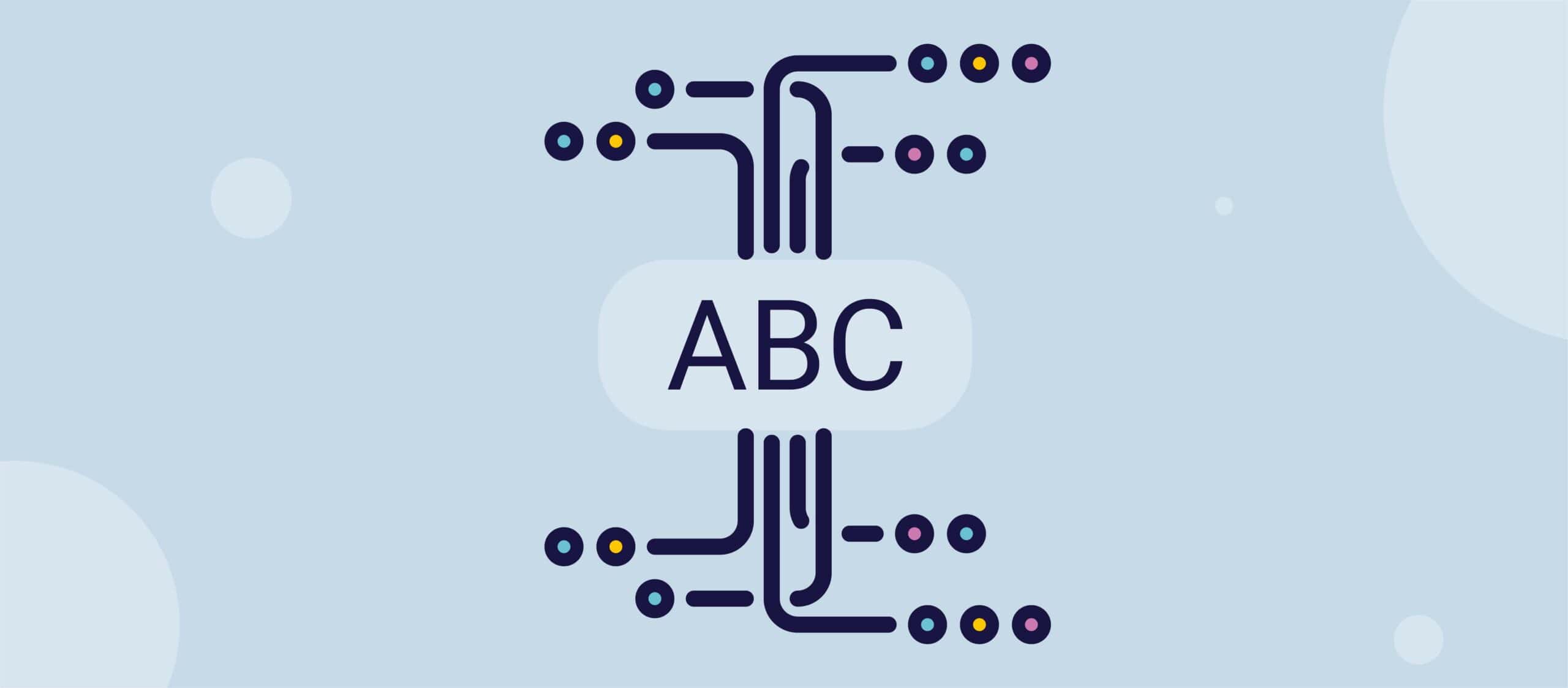In our increasingly digital world, ensuring that online content and documents are accessible to all individuals, including those with disabilities, has become paramount. Digital tilgjengelighet isn’t just a matter of ethical responsibility—it’s also a legal requirement in many jurisdictions. It’s essential for inclusivity, allowing people with various disabilities to participate fully in all aspects of society. This includes the visually impaired who may use screen readers, those with motor impairments who rely on keyboard navigation, and many others who benefit from accessible content.
Digital tilgjengelighet has far-reaching implications, affecting education, employment, commerce, and access to information and services. By adhering to accessibility standards, organizations can reach a wider audience, improve user experience for all, and comply with legal obligations, thus avoiding potential litigation.
To navigate the landscape of digital tilgjengelighet, it is crucial to understand the key laws and guidelines that govern it.

Understanding Accessibility Laws in the US
ADA
The Americans with Disabilities Act (ADA) is a landmark civil rights law enacted in 1990 in the United States. It prohibits discrimination against individuals with disabilities in all areas of public life, including jobs, schools, transportation, and all public and private places that are open to the general public. The ADA’s primary purpose is to ensure that people with disabilities have the same rights and opportunities as everyone else, promoting equal treatment and accessibility in various aspects of society.
The significance of the ADA cannot be overstated. It has fundamentally transformed the landscape for individuals with disabilities, fostering an environment of inclusivity and accessibility. By requiring accessible public spaces, reasonable accommodations in the workplace, and equitable treatment in employment, education, and healthcare, the ADA has helped break down barriers that people with disabilities have historically faced.
Moreover, the ADA has also been interpreted to extend to digital tilgjengelighet, emphasizing the importance of making web content and other digital resources accessible to individuals with disabilities. This adaptation reflects the evolving understanding of accessibility in the digital age, ensuring that the ADA continues to fulfil its purpose of promoting equality and accessibility for all, regardless of physical or cognitive limitations.
Section 508 of the Rehabilitation Act
Section 508 of the Rehabilitation Act mandates that all electronic and information technology (E&IT) used by U.S. federal agencies must be accessible to people with disabilities. This includes federal websites, digital documents, and software applications, ensuring employees and the public have equal access to information and services. The standards for compliance are also aligned with the Web Content Accessibility Guidelines (WCAG), setting a high bar for accessibility.
The scope of Section 508 extends to contractors and vendors supplying E&IT products or services to federal agencies, encouraging the private sector to adopt similar accessibility standards. Audits monitor compliance, and individuals can file complaints against non-compliant agencies, leading to mandatory remediation.
Section 508 has significantly influenced digital accessibility, pushing for inclusive design from the outset of technology development. It has spurred innovation in accessible solutions and raised awareness about the importance of making digital resources available to all. By setting a precedent within the federal government, Section 508 has promoted a broader adoption of accessibility practices across sectors, highlighting the importance of accessibility in creating an inclusive digital environment.
WCAG
The Web Content Accessibility Guidelines (WCAG) are a set of recommendations designed to make web content more accessible to people with disabilities. Developed by the World Wide Web Consortium (W3C), the WCAG is considered the gold standard for web accessibility worldwide. These guidelines are crucial for ensuring that the internet is a space that everyone can use, irrespective of their physical or cognitive abilities.
WCAG is structured around four principles, often referred to by the acronym POUR: content must be Perceivable, Operable, Understandable, and Robust. These principles guide web developers and content creators in designing websites and digital content that can be accessed and used by people with a wide range of disabilities, including visual, auditory, physical, cognitive, and neurological disabilities.
Since its inception, WCAG has evolved to keep pace with the changing landscape of the internet and technology. WCAG 2.0, released in 2008, was a major milestone that provided a comprehensive framework for web accessibility. It was later updated to WCAG 2.1 in 2018 and then to WCAG 2.2 in 2023 to cover a wider range of disability needs, including improvements for mobile accessibility, people with low vision, and those with cognitive and learning disabilities. These updates reflect the ongoing commitment to inclusivity in the digital age.
In the United States, it has been widely adopted as the benchmark for compliance with various federal and state accessibility laws. The Americans with Disabilities Act (ADA), for example, has been interpreted by some courts to apply to websites, requiring that they meet WCAG standards to ensure accessibility. Additionally, Section 508 of the Rehabilitation Act mandates that all electronic and information technology developed, procured, maintained, or used by the federal government be accessible, with WCAG often serving as the guideline for compliance. As such, WCAG has become a global standard that not only guides web accessibility efforts but also shapes legal and regulatory frameworks for digital inclusivity.

Accessibility Laws and Standards in Canada
In Canada, the commitment to digital tilgjengelighet for individuals with disabilities is embodied in several laws and standards, with the Accessibility for Ontarians with Disabilities Act (AODA) being a cornerstone. Enacted in 2005, the AODA aims to create a barrier-free Ontario by 2025 by mandating that organizations in the public, private, and non-profit sectors meet established accessibility standards. These standards cover various areas, including customer service, employment, transportation, design of public spaces, and, crucially, information and communications.
The AODA’s requirements for digital content specifically focus on ensuring that websites, web content, and software applications are accessible to individuals with a wide range of disabilities. Organizations are required to comply with the Web Content Accessibility Guidelines (WCAG) 2.0 Level AA, excluding criteria related to live captions and audio descriptions. This alignment with WCAG standards ensures that digital platforms are navigable, understandable, and usable for people with visual, auditory, physical, speech, cognitive, and neurological disabilities. From public websites to internal systems, the AODA seeks to ensure digital tilgjengelighet is a priority.
Beyond Ontario, Canada’s commitment to accessibility is further demonstrated through federal initiatives. The Accessible Canada Act (ACA), passed in 2019, aims to achieve a barrier-free Canada by 2040. While the ACA takes a broader approach, covering more than just digital content, it underscores Canada’s alignment with global standards like WCAG and reinforces the nation’s dedication to inclusivity in the digital realm.
Learn more about Accessibility Laws and Standards in Canada here

Rammeverk for tilgjengelighet i Europa
Europe’s approach to digital tilgjengelighet is characterized by a robust framework that aims to ensure equitable access to digital information and services for people with disabilities. A key component of this framework is the European Union (EU) Web Accessibility Directive, adopted in 2016. This directive mandates that websites and mobile applications of public sector bodies across EU member states must be accessible to people with disabilities, aligning with the principle of non-discrimination and equal access.
The scope of the EU Web Accessibility Directive is comprehensive, covering all public sector bodies’ digital presence. This includes websites, mobile applications, and all forms of digital content provided to the public, such as documents and multimedia. The directive sets out clear requirements for accessibility, specifying that public sector websites and apps must be perceivable, operable, understandable, and robust for users with disabilities. To achieve these requirements, the directive explicitly aligns with the Web Content Accessibility Guidelines Level AA, ensuring that its standards are in line with internationally recognized best practices in digital tilgjengelighet.
European countries have been actively incorporating the directive’s requirements into their national laws, ensuring that the mandate for digital tilgjengelighet is legally binding within their jurisdictions. This process involves adapting existing legislation or introducing new laws to enforce the directive’s standards, setting deadlines for compliance, and establishing mechanisms for monitoring and reporting on accessibility.
By incorporating WCAG into national laws through the EU Web Accessibility Directive, European countries are not only enhancing the digital experience for individuals with disabilities but also promoting a more inclusive digital environment. This alignment ensures consistency in accessibility standards across Europe, facilitating a smoother implementation process for public sector bodies and contributing to the broader goal of an accessible and inclusive digital Europe.
Learn more about Accessibility Frameworks in Europe here.

Tilgjengelighetsstandarder i Australia
In Australia, the commitment to digital tilgjengelighet is primarily anchored in the Disability Discrimination Act (DDA) of 1992. This legislation is designed to protect individuals with disabilities from discrimination in various sectors of public life, including employment, education, and access to services. While the DDA does not explicitly mention digital tilgjengelighet, its principles have been broadly interpreted to cover access to information and services provided through digital platforms, such as websites and mobile applications. This interpretation underlines the importance of ensuring that digital content is accessible to everyone, including those with disabilities.
The Australian Human Rights Commission has provided guidance on applying the DDA to digital tilgjengelighet, emphasizing that businesses and organizations should strive to make their online content accessible to avoid discrimination. In practice, this means following established international standards for digital tilgjengelighet, notably the Web Content Accessibility Guidelines (WCAG).
In addition to following international standards, Australia has also been involved in the development of local standards and initiatives aimed at enhancing digital tilgjengelighet. For instance, the Australian Government has established the Digital Transformation Agency, which provides resources and guidelines to help government departments and agencies make their digital services accessible in line with the WCAG. Moreover, the National Transition Strategy was implemented to guide Australian government websites towards WCAG compliance, reflecting a nationwide effort to ensure digital inclusivity.
Through its adherence to WCAG guidelines and the proactive development of local standards, Australia is actively promoting digital tilgjengelighet. This approach not only aligns with the principles of the DDA by preventing discrimination against individuals with disabilities but also contributes to creating a more inclusive digital environment across the nation.
Learn more about Accessibility Standards in Australia here.

ADA vs. Section 508 vs. WCAG: A Global Perspective
The Americans with Disabilities Act (ADA), Section 508 of the Rehabilitation Act, and the Web Content Accessibility Guidelines (WCAG) are pivotal in advancing digital tilgjengelighet, each serving distinct but complementary roles. When viewed from a global perspective, understanding how these standards and laws interconnect and compare with international equivalents is crucial for fostering an inclusive digital world.
The ADA, a civil rights law enacted in 1990 in the United States, prohibits discrimination against individuals with disabilities in all areas of public life. Its application to digital tilgjengelighet, although not initially explicit, has been affirmed through legal interpretations. This broad mandate has pushed organizations to consider accessibility as part of their online presence to ensure equitable access to services and information.
Section 508, specifically targeting federal agencies and their contractors, requires that electronic and information technology (E&IT) be accessible to people with disabilities. Unlike the ADA, Section 508 provides clear standards aligned with WCAG for compliance, directly influencing the procurement and development of technology within the government sector.
WCAG, developed by the World Wide Web Consortium (W3C), sets the international standard for web accessibility. Its principles and guidelines are designed to make online content accessible to a wide range of disabilities. WCAG serves as a technical standard that laws like the ADA and Section 508 reference for compliance, ensuring a cohesive approach to digital tilgjengelighet across jurisdictions.
Internationally, many countries have adopted or aligned their accessibility laws and standards with WCAG, creating a global movement towards digital inclusivity. For example, the European Union’s Web Accessibility Directive mandates WCAG compliance for public sector bodies, and Australia’s Disability Discrimination Act (DDA) has been interpreted to encompass digital tilgjengelighet in line with WCAG guidelines.
The interconnection between ADA, Section 508, and WCAG, along with their international equivalents, underscores a collective effort to eliminate barriers in the digital environment. By adopting these standards, countries and organizations worldwide contribute to a more accessible and inclusive digital space, ensuring that individuals with disabilities can participate fully in the digital society.

How to Ensure Your Documents Meet Global Accessibility Standards
Ensuring that your documents meet global accessibility standards is crucial for creating an inclusive digital environment. Compliance with standards such as the Americans with Disabilities Act (ADA), Section 508 of the Rehabilitation Act, the Web Content Accessibility Guidelines (WCAG), the Accessibility for Ontarians with Disabilities Act (AODA), the European Union’s directives, and Australian standards is not just about adhering to legal requirements—it’s about ensuring that your content is accessible to a diverse audience, including individuals with disabilities. Here’s a comprehensive guide to achieving this goal.
Each of the mentioned standards and laws has its specific requirements, but they all share a common goal: to make digital content accessible. For instance, WCAG serves as the foundation for many of these regulations, providing detailed guidelines for making web content accessible. Familiarizing yourself with these guidelines is the first step towards creating documents that are universally accessible.
Automated checks should be supplemented with manual testing, including navigating the document using only a keyboard or a screen reader, to ensure that all content is accessible.
Structure and Semantics: Use proper headings, lists, and other structural elements to organize your document. This helps screen readers interpret the content correctly.
Alternative Text: Provide alternative text for non-text content, such as images and graphs, so that screen reader users can understand their purpose.
Color and Contrast: Ensure sufficient contrast between text and background colors. Avoid using color as the only means of conveying information.
Accessible Tables: Use simple table structures and specify row and column headers to make data tables accessible.
Links and Navigation: Make sure links are descriptive and that the document can be easily navigated using a keyboard.
Fonts and Text: Use readable fonts and allow users to resize text without losing functionality.
Accessibility is not a one-time task but an ongoing commitment. Technologies and standards evolve, as to how people interact with digital content. Regularly review and update your documents to ensure they remain compliant with the latest accessibility standards. Establishing a schedule for regular accessibility audits and updates can help maintain compliance over time.

In conclusion, ensuring that documents meet global accessibility standards, such as those set by the ADA, Section 508, WCAG, AODA, the EU Web Accessibility Directive, and Australia’s DDA, is not just a regulatory necessity but a moral imperative, underscored by the significance of PDF/UA compliance. These frameworks collectively contribute to the universal design for document creation, emphasizing the need for documents to be accessible to everyone, regardless of their abilities. By adhering to standards like WCAG and understanding the legal requirements for web accessibility in various jurisdictions, including accessibility laws in Canada, Europe, Australia, and the USA, organizations can create accessible documents for global compliance, including ensuring PDF/UA compatibility.
This involves not only following best practices for accessible documents but also embracing a culture of inclusion that goes beyond mere compliance. The journey towards ensuring document accessibility worldwide involves leveraging tools and methodologies that address the unique challenges faced by individuals with disabilities, including the specifications outlined in PDF/UA. From ADA compliance documents to adhering to Section 508 accessibility guidelines and beyond, the goal is to make information freely accessible and usable to all, aligning with PDF/UA’s emphasis on universal accessibility standards.
By adopting WCAG requirements and striving to make documents accessible under ADA standards, including PDF/UA compliance, we can bridge the digital divide and foster a more inclusive society. Embracing accessibility should be seen as an opportunity for broader engagement and inclusion, where the value extends beyond compliance to building a genuinely accessible digital landscape. This commitment to accessibility signifies respect for diversity and a dedication to universal access, highlighting the pivotal role of global digital tilgjengelighet standards, including PDF/UA, in shaping an inclusive future. Let’s continue to champion these principles, ensuring that our digital spaces are welcoming and accessible to everyone, thereby enriching our global community.



